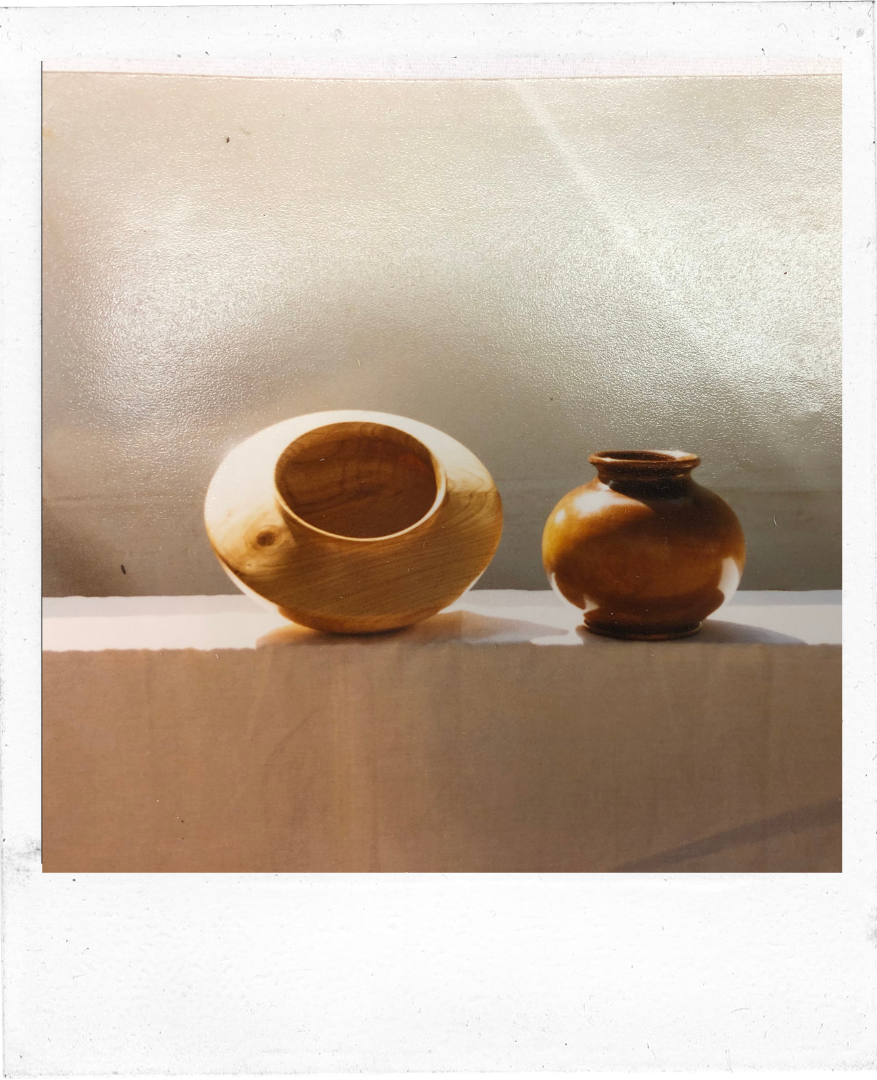Matthew Geroux is a self-taught, woodworker and woodturner with decades of experience, a deep connection to the land, and to wood itself. As a child, Matt picked up woodworking straight away, fashioning treehouses, toys and soapbox cars that provided him, and his 7 brothers and sisters hours of fun growing up outside of a small town in Ontario, Canada. In grade 7 shop class, Matt encountered a lathe for the very first, which sparked a love affair with the process of woodturning that has lasted over 6 decades.
In 1980, Matt bought his first lathe, mounted a piece of firewood on it, and not long after, had a bowl. In the years that followed, he turned anything and everything that he could get his hands on. The homes of his friends and family started to fill with handmade stools, rocking chairs, bowls, plates, boxes and anything with spindles. In 1984, Matt, his wife Phillippa, their 2 young children, and the lathe, moved to rural Nova Scotia, where they still live today.
During Matt’s time as a professional carpenter, he’s worked on building & finishing homes, creating cabinets, building furniture, and even boats, and guitars. If it’s made from wood, chances are, Matt has experience working with it.
Matt’s philosophy is that his job as a wood turner, is not to create a work of art, but simply to listen deeply, and reveal the unique natural beauty and form already inherent within the wood.
Matt is entirely self-taught and is greatly inspired by the work of David Ellsworth, Ed Moulthrop and Dale Nish.
About Matt
Geroux’s Woodturning Over The Years
The Making Of A Piece
Step 1: Sourcing
Over the last several decades I’ve built and nurtured relationships with several environmentally conscious, local landowners. This allows me to carefully & ethically source all of the wood I use in my work. When possible, I always select wood from trees that have fallen naturally due to age, disease or severe weather events. This means I’m often giving a second life to trees that have already died, rather than harvesting new wood.
Step 3: Shaping & Hollowing
The green block (fresh wood) that has just been rough cut is mounted and turned on the lathe for the first time. A lathe is an ancient tool that has been used for hundreds of years to make table and chair legs, banisters and other ornate, rounded & organic wooden structures. It bears some resemblance to a pottery wheel. However, wood is mounted horizontally, rather than vertically, and precise cutting tools are used to shape the wood. It’s during this first turning that I work with the wood to reveal its natural beauty and personality through shaping and hollowing the piece.
Step 5: Second Turning
After the piece has stabilized during the natural drying process, it gets mounted on the lathe for a second time. Using custom made specialty tools, I remove ever finer layers while the wood spins on the lathe. This is where the piece takes its finished shape, size and design and requires the most detail and skill allowing the vision for the finished piece to come to life.
Step 2: Rough Cut
Based on the natural characteristics of each piece of wood (grain, the cambium layer (just under the bark), shape, size etc.) I unearth the basic form of the piece using a chainsaw, ready to be mounted for the lathe.
Step 4: Natural Drying
Each piece is then allowed to dry in a climate-controlled environment for 6 weeks, to several months, depending on the thickness and characteristics of the wood. This extended drying process allows me to create a superior quality finished piece without the use of harsh chemicals like polyethylene glycol green wood stabiliser that is produced during the refinement process of petroleum, natural gas and coal, which are commonly used in the creation of wood bowls, and vases.
Step 6: Finishing
Different finishes are applied by hand to enhance the natural beauty of the wood and provide durability for a long-wearing end result. For salad & fruit bowls I use a mix of food-grade walnut oil & beeswax to finish the piece so it holds up well to normal wear and tear, without the use of any chemicals whatsoever. For all other pieces, I use a french polish finish, which involves mixing non-toxic, natural shellac with food-grade walnut oil, and applying it by hand.











